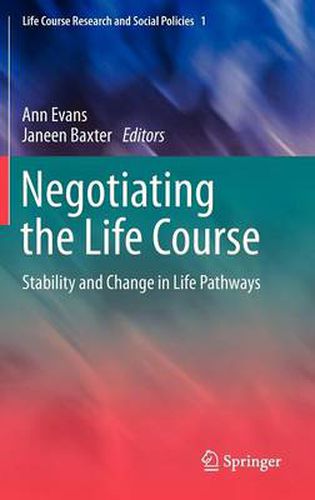Readings Newsletter
Become a Readings Member to make your shopping experience even easier.
Sign in or sign up for free!
You’re not far away from qualifying for FREE standard shipping within Australia
You’ve qualified for FREE standard shipping within Australia
The cart is loading…






This title is printed to order. This book may have been self-published. If so, we cannot guarantee the quality of the content. In the main most books will have gone through the editing process however some may not. We therefore suggest that you be aware of this before ordering this book. If in doubt check either the author or publisher’s details as we are unable to accept any returns unless they are faulty. Please contact us if you have any questions.
Pathways through the life course have changed considerably in recent decades. Many of our assumptions about leaving home, starting new relationships and having children have been turned upside down. It is now almost as common to have children prior to marriage as afterwards, and certainly much more common to live together before marrying than to marry without first living together. Women are more likely to remain in the labour force after having children and many families struggle with problems of work-family balance at some stage in their lives, particularly when they have young children. But how much has really changed? Is there really more diversity in how individuals transition through these life course stages, or just variations at the margin with most people following a standard work and family life course?
This volume makes use of rich longitudinal data from a unique Australian project to examine these issues. Drawing on broader theories of social change and demographic transitions in an international context, each chapter provides a detailed empirical assessment of the ways in which Australian adults negotiate their work and family lives. In doing so, the volume provides important insight into the ways in which recent demographic, social and economic changes both challenge and reproduce gender divisions.
$9.00 standard shipping within Australia
FREE standard shipping within Australia for orders over $100.00
Express & International shipping calculated at checkout
This title is printed to order. This book may have been self-published. If so, we cannot guarantee the quality of the content. In the main most books will have gone through the editing process however some may not. We therefore suggest that you be aware of this before ordering this book. If in doubt check either the author or publisher’s details as we are unable to accept any returns unless they are faulty. Please contact us if you have any questions.
Pathways through the life course have changed considerably in recent decades. Many of our assumptions about leaving home, starting new relationships and having children have been turned upside down. It is now almost as common to have children prior to marriage as afterwards, and certainly much more common to live together before marrying than to marry without first living together. Women are more likely to remain in the labour force after having children and many families struggle with problems of work-family balance at some stage in their lives, particularly when they have young children. But how much has really changed? Is there really more diversity in how individuals transition through these life course stages, or just variations at the margin with most people following a standard work and family life course?
This volume makes use of rich longitudinal data from a unique Australian project to examine these issues. Drawing on broader theories of social change and demographic transitions in an international context, each chapter provides a detailed empirical assessment of the ways in which Australian adults negotiate their work and family lives. In doing so, the volume provides important insight into the ways in which recent demographic, social and economic changes both challenge and reproduce gender divisions.